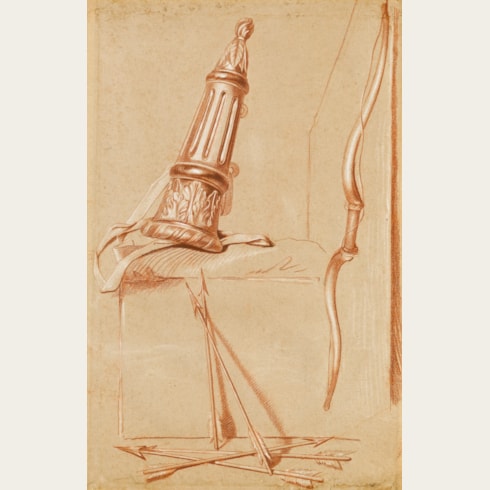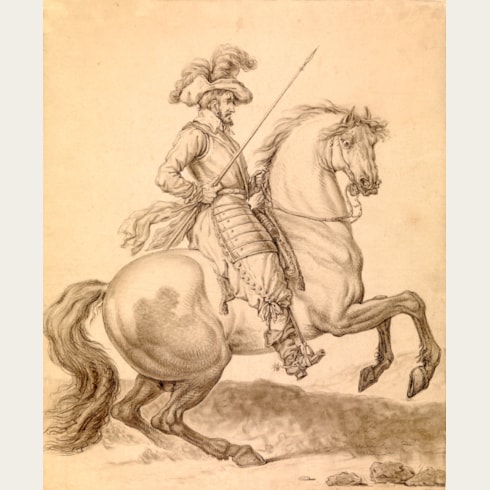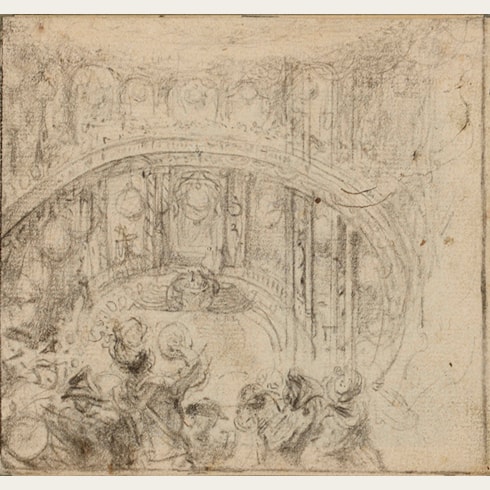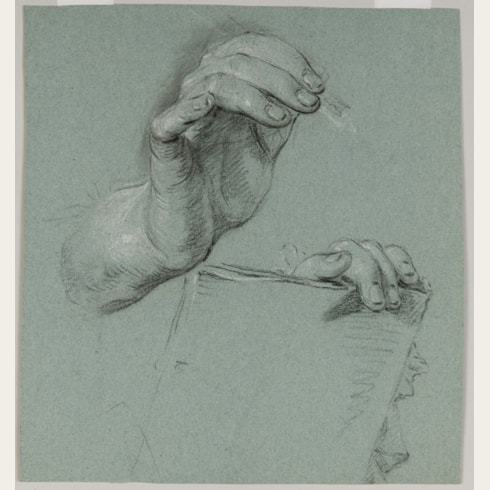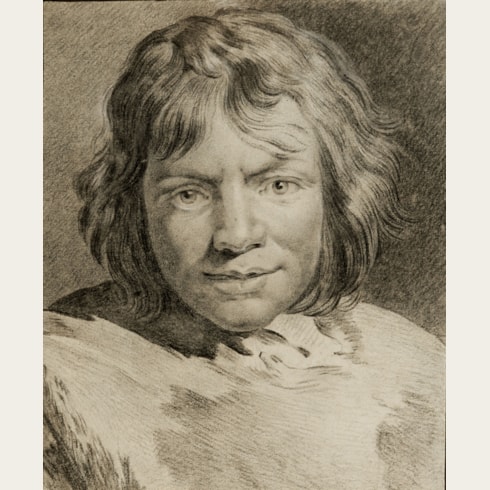18th Century FRENCH SCHOOL
An Emerald Tree Boa
234 x 370 mm. (9 1/4 x 14 5/8 in.) [image]
273 x 408 mm. (10 3/4 x 16 in.) [sheet]
Under the King's patronage, the commissioning of works to add to the collection, now known as the Vélins du Roi, was continued, and in 1666 Robert was appointed peintre ordinaire du Roi pour la miniature. His contract called for a minimum number of fifty-four vélins to be executed by Robert and his workshop for the Vélins du Roi each year. Botanical subjects were taken from the Jardin Royale in Paris, and the exotic species of birds and animals from the Ménagerie at Versailles. The practice of commissioning additions to the Vélins du Roi continued well into the 18th century, involving such artists as Gerard van Spaendonck and Pierre-Joseph Redouté.
The Vélins du Roi can be identified by the fine quality of the vellum used and the gold borders framing the composition; each peintre du roi had his drawings mounted with his own distinctive gold border. However, while the vélins in the Royal collection have at best only cursory backgrounds, the presence of a highly finished landscape in this superb study of a snake suggests that it was intended for a private patron.
The snake depicted in this gouache would appear to be an emerald tree boa (corallus caninus), native to South America. Its appearance is characterized by a greenish colouring, yellow belly and white irregular diamond or zigzag shapes down its back.






